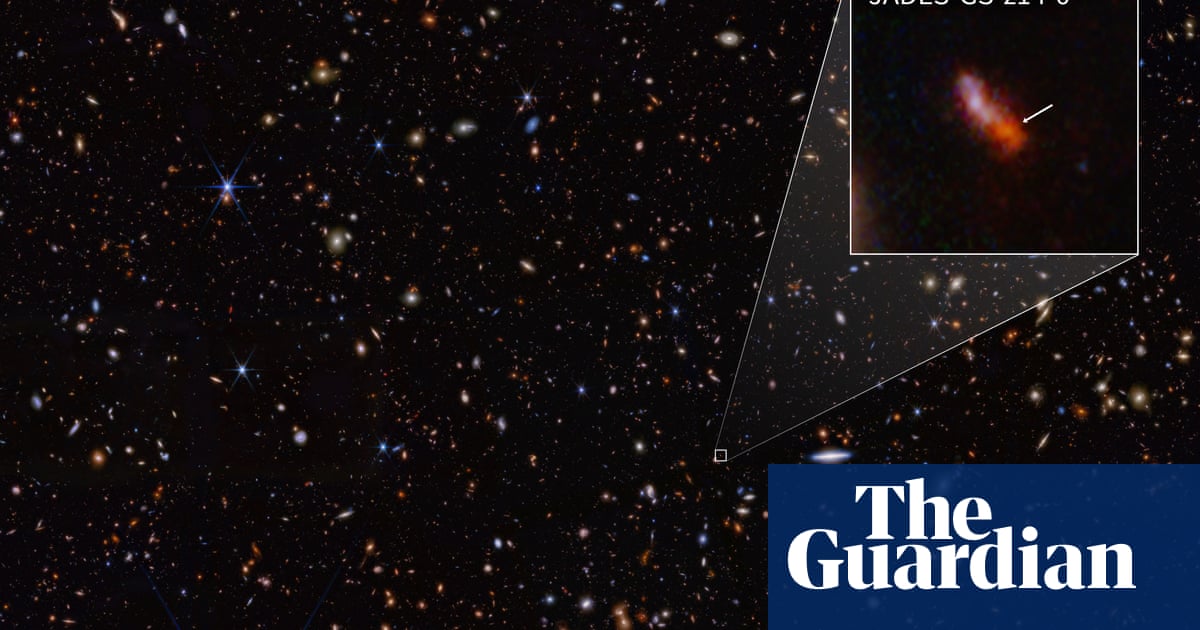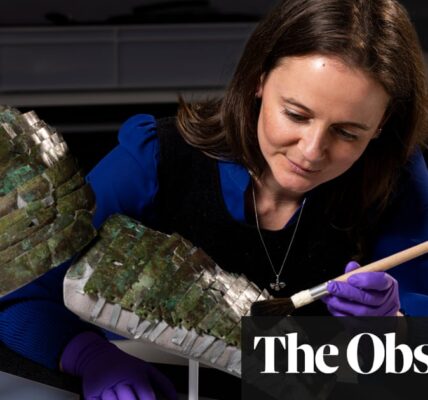
The most distant known galaxy has been captured in a record-breaking image by the James Webb space telescope.
The galaxy, called JADES-GS-z14-0, is revealed as it was just 290m years after the big bang, at the dawn of the universe. The telescope’s previous record holder was a galaxy seen at 325m years after the big bang, which happened nearly 14bn years ago.
The newly observed galaxy is much brighter than expected, suggesting that the first generation of stars were either more luminous or formed much more rapidly than conventional cosmological theories have predicted.
“The universe at these early stages was different than it is today,” said Dr Francesco D’Eugenio, of the University of Cambridge, one of the team behind the discovery. “Early galaxies – this is the most distant found but there are others – seem to be brighter than expected from the models.”
The $10bn James Webb space telescope, launched in 2021, can see further across the cosmos than any previous telescope. Due to the expansion of the universe, the light from distant galaxies stretches to longer wavelengths as it travels, an effect known as redshift. In these galaxies the effect is extreme, stretching by a factor of 15, and moving even the ultraviolet light of the galaxies to infrared wavelengths where only the James Webb space telescope has the capability to see it.
These incredibly distant observations reveal the universe in its infant state and are already transforming scientists’ understanding of the early universe. An emerging theme is that galaxies and black holes appear to have grown much more rapidly than was expected.
Dr Stefano Carniani, of the Scuola Normale Superiore in Pisa, the lead author on the discovery paper, said: “JADES-GS-z14-0 now becomes the archetype of this phenomenon. It is stunning that the universe can make such a galaxy in only 300m years.”
This suggests that either the earliest stars were far more luminous than those seen today or that the galaxy was much more massive. “We’re not quite sure which one it is,” D’Eugenio said.
The unexpected brightness of these early galaxies means that the telescope could make even more distant observations.
Prof Brant Robertson, of the University of California-Santa Cruz, said: “We could have detected this galaxy even if it were 10 times fainter, which means that we could see other examples yet earlier in the universe – probably into the first 200m years. The early universe has so much more to offer.”
Source: theguardian.com



